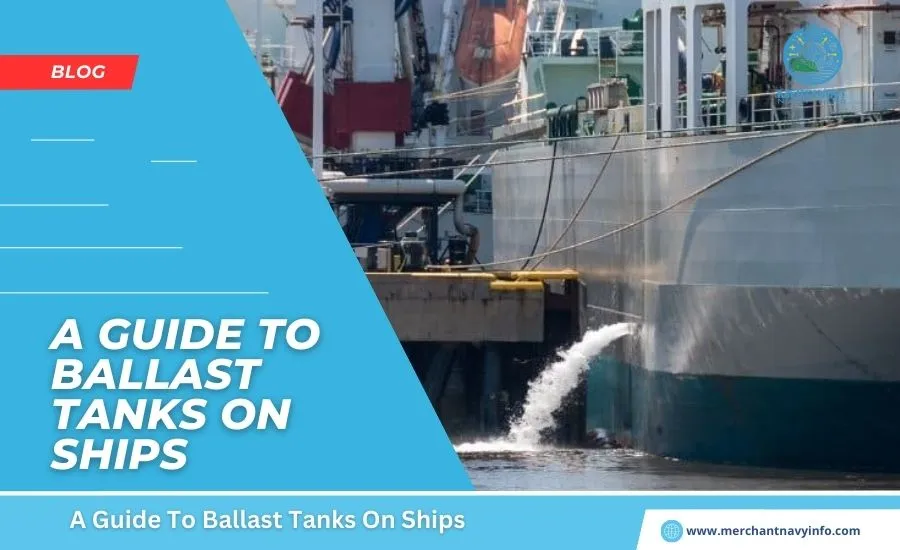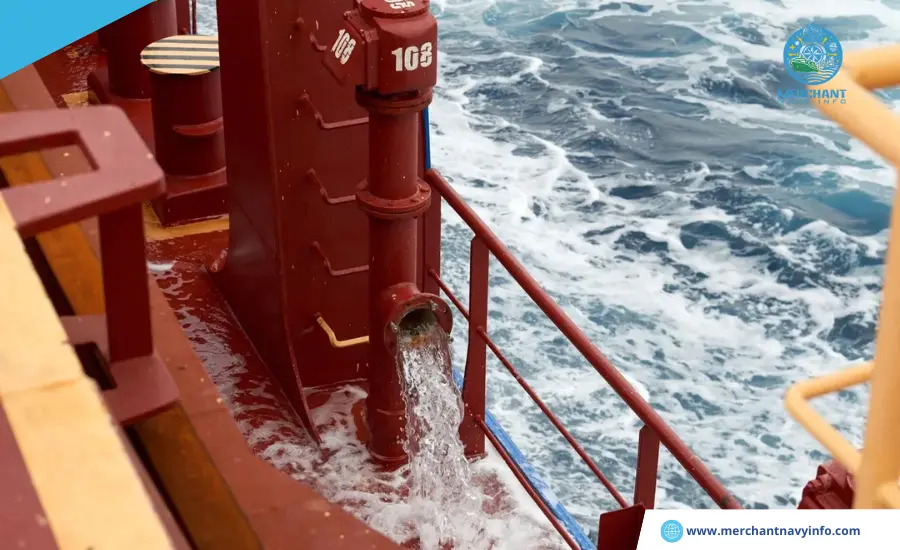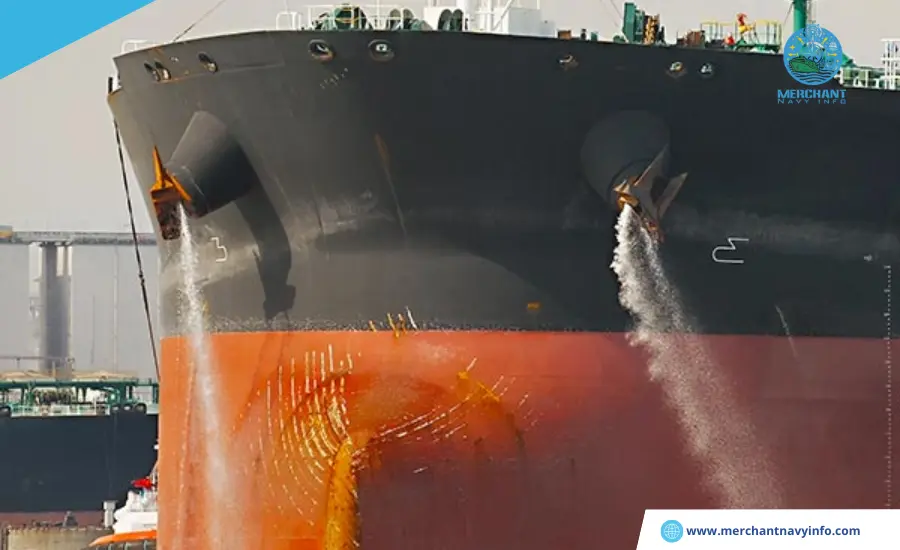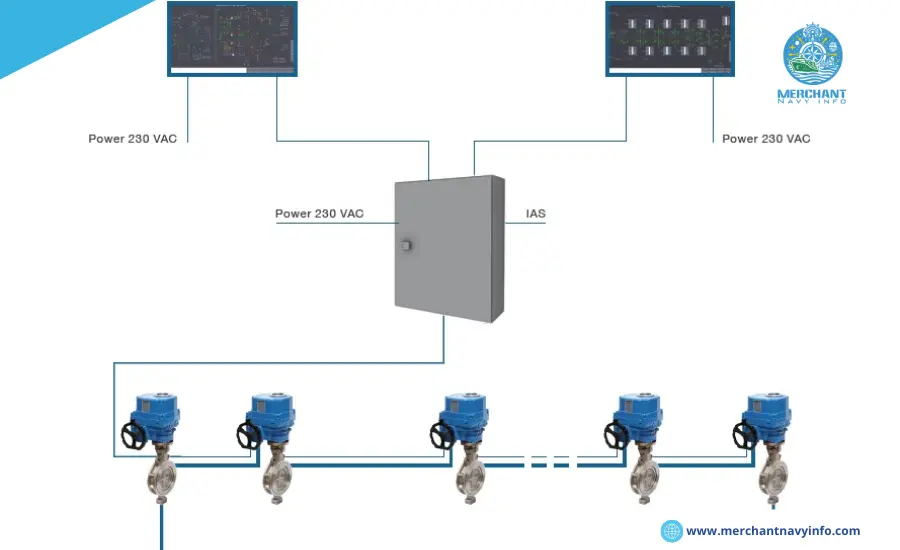
During the design and construction phase of a ship, ballast tank are placed at various locations to maintain the stability of the ship during the voyage. The concept of ballast is not new and has been pursued for a long time. In the past, ocean-going ships used solid ballast such as sandbags, stones, and iron blocks, which were unloaded once the process of loading and unloading cargo was completed. This method helped to some extent to maintain the ship’s stability and seaworthiness. However, today’s ships transport liquid ballast, such as freshwater, seawater, or brackish water, in a variety of ballast tanks. As ships become larger and the cargo they carry varies from port to port (depending on global economic conditions, ship conditions, local travel requirements, etc.), maintaining ship trim and stability for safe maritime navigation, Water ballast tanks are used.
Why Does the Tank Contain Ballast Water?
Assume that the ship does not have a ballast system. In such cases, the following situations may occur:
- The propeller may not be completely submerged in the water, affecting the vessel’s engine efficiency
- The vessel may not be at its full carrying capacity, which may cause the vessel to heel or trim
- Vessel When torsional loads are applied to the ship, the stresses on the ship’s structure increase, and bending moments and shocks can occur.
- Ships may face problems of lateral and longitudinal dynamic instability.
Types Of Ballast Conditions

The ship’s first officer and master are responsible for adding or removing ballast water from the ship’s ballast tanks, depending on the ship’s stability. There are three main types of ballast conditions:
Light Ballast
Water ballast tanks are kept empty when the ship is heavily loaded, and no additional ballast is required. This state is called light ballast.
Heavy Ballast
If the ship is not fully loaded at sea, the ship’s ballast tanks will be filled to capacity. This condition is called heavy luggage.
Port Ballast
Many ports around the world have restrictions on the use of ballast water. Special port ballast tanks are provided to correct the ship’s trim and heel during loading or unloading operations. These are called port ballast tanks.
Types Of Ship Ballast Tanks Depending On Location
Water ballast tanks are installed in different locations depending on the type of ship. Below are some of the most common locations where ballast tanks can be built on ships.
Topside Tanks
As the name suggests, these tanks are located in the top corners of the ship. The upper tank is triangular in shape, with wings on each side of the hold. These are more common on bulk carriers and consist of transverse frames arranged as follows:
- The horizontal deck below the main deck with deck planks has been installed.
- Lower cross member.Forms part of the support frame for the lower area of the upper tank.
Lower Hopper Tanks
These water ballast tanks are constructed similarly to upper ballast tanks and are located on the lower wing side of each ship’s cargo hold. It is held following a double-bottom tank that runs through the center of the ship. Hopper tanks have the following advantages:
- Serves as additional ballast space for the vessel.
- The design with sloped corners of the hold facilitates the collection of cargo in the central position of the hold, allowing for better unloading.
- Adjacent fuel tank panels of bunker tanks form sloped boundaries to accommodate static and dynamic loads during cargo loading and ballasting.
Double Bottom Tank (DB)
The double bottom of a vessel is a safety feature that prevents water ingress in the event of a grounding or collision. A ship’s ballast water is stored in these cavities to stabilize the ship. The double-bottom tank is located between the forward (up to the impact bulkhead) and aft tip bulkheads and divides the engine room. In some ships, such as container ships and bulk carriers, the double bottom space is divided laterally into three sections (instead of two). This is done to provide intermediate closures called channel keels that are used to carry the ballast and bunker tank valves and piping for the ship’s ballast tank and bunker system.
Fore and Aft Tip Ballast Tanks
The fore and aft tip ballast tanks are used to perform precision trimming operations on ships. To achieve the required trim, these tanks are rarely partially filled to avoid liquid-free surface effects. The design of the bow and stern tanks differs from other ships’ ballast tanks because they are highly irregular in shape depending on their location, and the shape is highly dependent on the ship’s bow and stern design.
Types Of Ballast Tanks Depending on the Application of Oil Tankers

Various regulations apply to oil tankers’ ballast tanks. There are two main types depending on the application.
1. Clean Ballast Tank (CBT)
2. Separate Ballast Tank (SBT)
According to MARPOL Annex 1, Regulation 18 – Crude oil tankers with a dead weight of 20,000 tonnes. In accordance with Regulation 1.28.4, product carriers of 30,000 tonnes deadweight or more delivered on or after 1 June 1982 must be equipped with separate ballast tanks.
Separate Ballast Tank
The Separate Ballast Tank (SBT) is a special tank designed specifically for the transport of ballast water in oil tankers. They are completely separated from the cargo and also fuel tanks and only ballast pumps are used in SBT. Separate ballast tanks eliminate the possibility of oil and water mixing that normally occurs when the hold is used to transport ballast water.
Clean Ballast Tanks (CBT)
The oil tankers may travel without carrying cargo in their holds, which may lead to stability issues, especially in bad weather. Hence, the cargo holds that carried oil in the last voyage are cleaned and also then filled with clean ballast water.
Ballast Tank Monitoring Level Monitoring

The ship’s ballast water tanks are equipped with level sensors that control the valves and ballast pumps for safe ballasting/deballasting operations. Several ballast pumps are installed in the engine room, which sucks the main seawater pipe (from the sea chest) during the ballasting process and discharge the water overboard through the ballast pipes and valves. CCR is equipped with a ballast tank level monitoring system, which controls the stopping of the pumps when the water level reaches the sensor level, which activates the trip.
Atmospheric Monitoring
In oil tankers, the ballast tanks are equipped with gas-sensing sensors at different levels (usually at the upper and lower levels). When the ship is loaded, also the ballast tanks remain empty. In this situation, a three-way valve on the sampling line is set at the bottom sampling point.
Volume Monitoring
Volume monitoring of ballast tanks is carried out to achieve the ballast/deballast ratio of the pump system. This is done by the Lodicator software installed on the ship, and the ship’s officer manipulates the results displayed by the Lodicator to operate her valves for filling/unloading her ballast tanks.
Ballast Tank Protector
Ballast tanks are filled with seawater, which is highly corrosive. When the tank is empty, the humid atmosphere promotes corrosion on the ballast tank surface. Corrosion is a major problem for ships.
The Following Methods are Used to Prevent Corrosion
Tank Coatings
Tank surface coatings are the most commonly used protection systems on ships. The advantage of coating is that the entire tank can be protected at once. With the right quality coating, your ballast tank will function smoothly for a long time. A coating layer that protects seawater from coming into contact with the tank’s steel.
Anode
The use of sacrificial anodes is very common in tanks to control corrosion. Zinc, aluminum, and their alloys with other metals such as tin are common anodes used in substrates.
Atmosphere Control
If the atmosphere in the ballast tank can be controlled to reduce oxygen levels, corrosion rates will be significantly reduced. This system is known as oxygen stripping and is done by introducing an inert gas to keep the oxygen level in the tank below 4%. This system is also used in tanks with a protective coating or with an anode (to extend the life of the sacrificial anode). Reduces corrosion by up to 84%.
The Advantages of this System are
- Reduced coating maintenance and steel renewal
- Extended anode life
- Reduced life cycle costs of ballast tank maintenance
Ballast Tank Inspection
Ship officers should be aware that You need to keep it. The following conditions in a ship’s ballast tank should be checked regularly:
Ballast Tank Corrosion
The extent of corrosion within the tank surface should be noted, and localized corrosion should be marked accordingly. If the corrosion reduction on the tank surface exceeds the allowable range of 75%, repairs such as updating the hull structure will be required.
Coating Condition
Coatings play an important role in the surface protection of ships’ ballast water tanks, so a proper inspection of the coatings must be carried out. Visible coating defects and rust formation on tank surfaces, especially on tank welds and edges.










